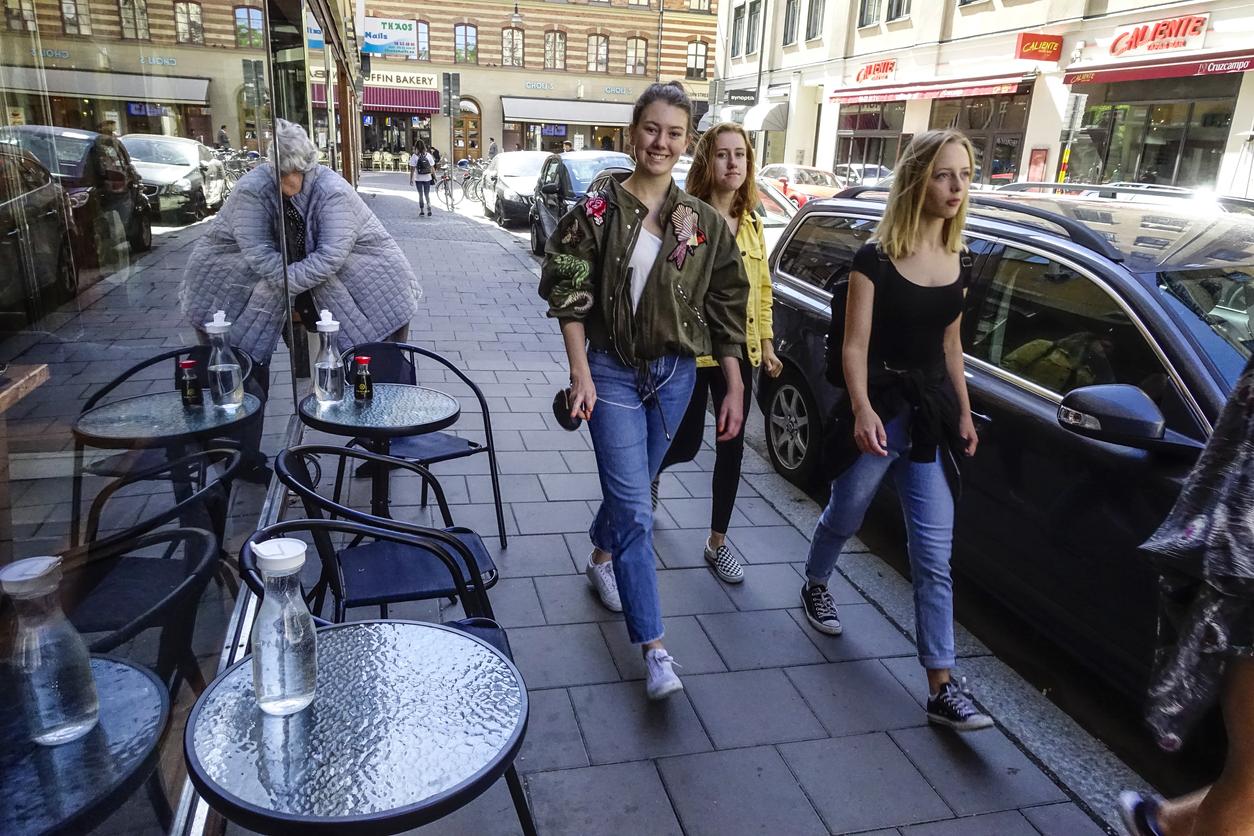Data on how well and how long mRNA COVID vaccines protect adolescents from severe COVID-19 infections are scarce, but newly published findings from a large, matched cohort study from young people in four Nordic countries found high efficacy that lasted as long as a year.
The study's main focus was the impact of primary vaccination on hospitalizations at 6- and 12-month follow-up, but the researchers also looked at the effect on lab-confirmed infections. The team reported its findings yesterday in Pediatrics. The group also examined the effectiveness of the Moderna vaccine and the impact of mixed doses of Pfizer-BioNTech and Moderna—called heterologous vaccination—for the primary schedule.
Delta, Omicron findings similar
The study was conducted during a time that spanned both Delta and Omicron SARS-COV-2 circulation, from May 28, 2021, to April 30, 2023. From nationwide registers in Denmark, Finland, Norway, and Sweden, researchers included 526,966 adolescents ages 12 to 17 who had gotten two mRNA vaccine doses, each with a matched unvaccinated control.
COVID vaccination in the age-group began in the four countries in the summer and fall of 2021. However, in early October of that year, Denmark, Finland, and Norway halted use of the Moderna vaccine due to safety concerns. For the same reason, Sweden barred its use in all people younger than 30.
For Pfizer-BioNTech, vaccine effectiveness (VE) against hospitalization was high, at 72.6% (95% confidence interval [CI], 62.5% to 82.7%) at the 6-month mark. Compared with unvaccinated adolescents, risk difference (RD) was –2.8 (95% CI, –4.5% to –1.0%) per 10,000 vaccinated after 6 months. For Moderna, VE and RD were 86.0% (95% CI, 56.8% to 100.0%) and –2.1 (95% CI, –4.0 to –0.2), and for heterologous vaccination, VE and RD were 80.7% (95% CI, 58.0% to 100.0%) and –5.5 (95% CI, –15.5 to 4.6).
At 12 months, VE against hospitalization for Pfizer-BioNTech was 65.6% (95% CI, 55.4% to 75.8%), for Moderna was 91.0% (95% CI, 72.6% to 100.0%), and for heterologous vaccination was 82.5% (95% CI, 63.6% to 100.0%).
The team found that results were similar for both Delta- and Omicron-dominant periods.
Hospitalizations were rare, which isn't surprising, given the younger healthy population. They ranged from fewer than 5 in vaccinated kids to 37 in their unvaccinated peers across 6 months of follow-up and from 8 to 140 at 12 months in the respective groups.
The authors said the VE findings against hospitalization in adolescents were similar to earlier data for the Pfizer-BioNTech vaccine, but only a few studies have estimated VE 6 months after the primary vaccine series. They noted that earlier studies were mixed on durability of protection.
What about infection prevention?
When the team looked at VE against lab-confirmed COVID at 6 months, the estimated it was 22.2% (95% CI, 4.5% to 39.8%) for Pfizer-BioNTech, 3.6% (95% CI, –37.0% to 44.1%) for Moderna, and 27.8% (95% CI, –1.1% to 56.7%) for mixed vaccination. Findings were similar for the group's 12-month estimate.
The authors included a caveat, however, that estimating VE against infection had limitations. In the early months of 2022, some Nordic countries shifted away from routine polymerase chain reaction (PCR) testing as home antigen testing became more common.
Absolute impact modest for healthy teens
The researchers said their estimate of COVID VE in teens needs to take into account absolute case reductions, especially considering the low number of hospitalizations, even in unvaccinated adolescents.
They note that vaccination prevented 3.5 to 6.2 COVID hospitalizations per 10,000 over 12 months, which for comparison is much lower than the 27.1 per 10,000 found in a Finnish study of children ages 6 weeks to 18 months who received the 10-valent pneumococcal vaccine.
"Therefore, the impact of primary vaccine schedules for COVID-19 seemed to be modest among the healthy adolescents in terms of absolute numbers," they wrote.




















